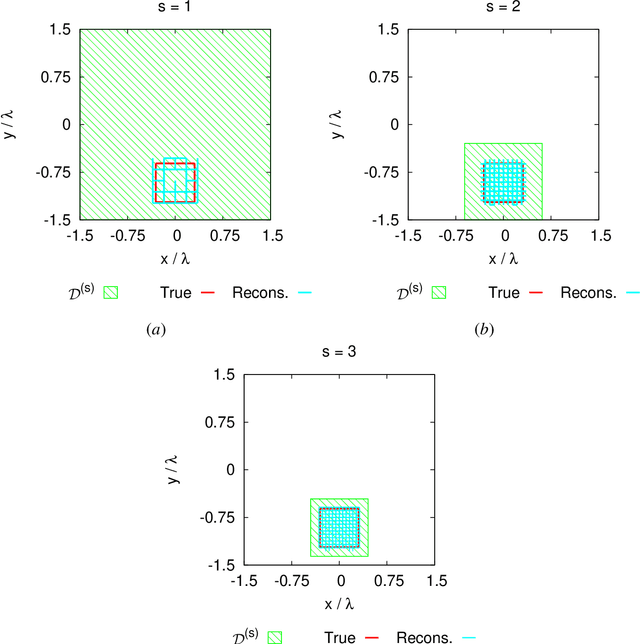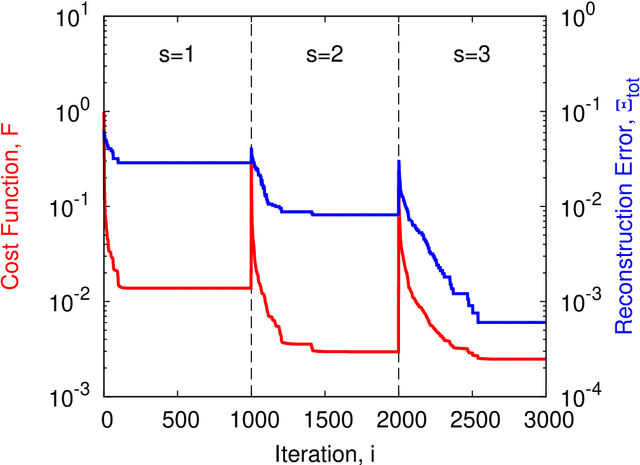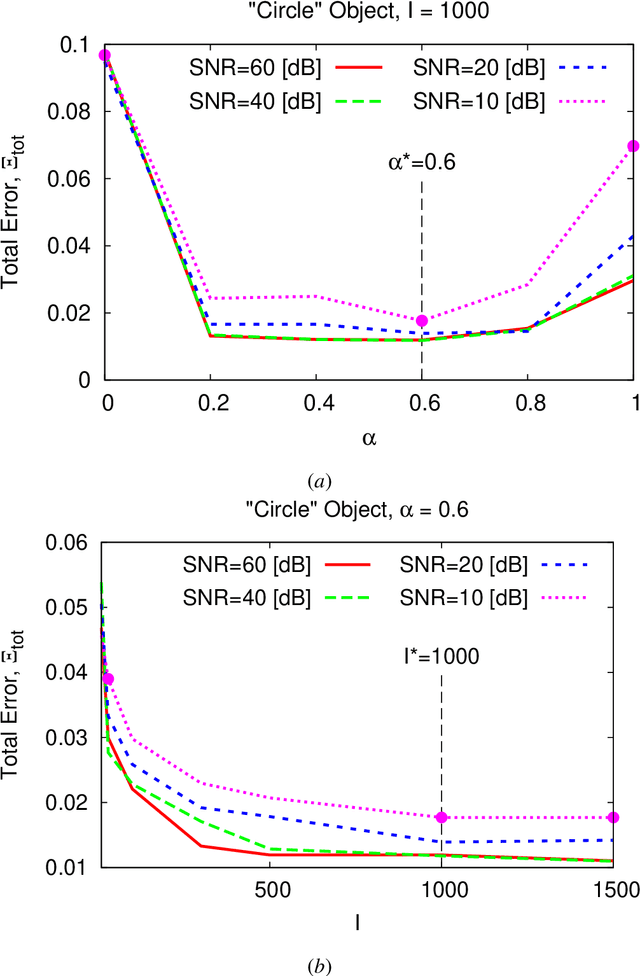Francesco Zardi
A Physics-Driven AI Approach for Microwave Imaging of Breast Tumors
Jan 05, 2024Abstract:In this paper, an innovative microwave imaging (MI) approach for breast tumor diagnosis is proposed that employs a differential formulation of the inverse scattering problem (ISP) at hand to exploit arbitrary-fidelity priors on the inhomogeneous reference/healthy tissues. The quantitative imaging of the unknown tumor is then rephrased into a global optimization problem, which is efficiently solved with an ad-hoc physics-driven artificial intelligence (AI) strategy inspired by the concepts and guidelines of the System-by-Design (SbD) paradigm. The effectiveness, the robustness, the reliability, and the efficiency of the proposed method are assessed against both synthetic and experimental data.
Optically-Transparent EM Skins for Outdoor-to-Indoor mm-Wave Wireless Communications
Aug 17, 2023



Abstract:Optically-transparent opportunistic electromagnetic skins (OTO-EMSs) are proposed to enable outdoor-to-indoor (O2I) millimiter-wave (mmW) wireless communications with existing windows/glass-panels. More in detail, static passive EMSs consisting of optically-transparent conducting patterned layers attached to standard glass-panels are designed. Towards this end, both the phase coverage and the optical transparency of a meshed copper-based meta-atom printed on a non-dedicated insulated glass substrate are optimized. Successively, the feasibility of OTO-EMSs able to support mmW high-efficiency O2I transmissions along non-Snell refraction directions is numerically demonstrated.
Multi-Scaling Differential Contraction Integral Method for Inverse Scattering Problems with Inhomogeneous Media
Nov 28, 2022



Abstract:Practical applications of microwave imaging often require the solution of inverse scattering problems with inhomogeneous backgrounds. Towards this end, a novel inversion strategy, which combines the multi-scaling (MS) regularization scheme and the Difference Contraction Integral Equation (DCIE) formulation, is proposed. Such an integrated approach mitigates the non-linearity and the ill-posedness of the problem to obtain reliable high-resolution reconstructions of the unknown scattering profiles. The arising algorithmic implementation, denoted as MS-DCIE, does not require the computation of the Green's function of the inhomogeneous background, thus it provides an efficient and effective way to deal with complex scenarios. The performance of the MS-DCIE are assessed by means of numerical and experimental tests, in comparison with competitive state-of-the-art inversion strategies, as well.
Multi-Resolution Subspace-Based Optimization Method for the Retrieval of 2D Perfect Electric Conductors
Aug 23, 2022



Abstract:Perfect Electric Conductors (PECs) are imaged integrating the subspace-based optimizationmethod (SOM) within the iterative multi-scaling scheme (IMSA). Without a-priori information on the number or/and the locations of the scatterers and modelling their EM scattering interactions with a (known) probing source in terms of surface electric field integral equations, a segment-based representation of PECs is retrieved from the scattered field samples. The proposed IMSA-SOM inversion method is validated against both synthetic and experimental data by assessing the reconstruction accuracy, the robustness to the noise, and the computational efficiency with some comparisons, as well.
 Add to Chrome
Add to Chrome Add to Firefox
Add to Firefox Add to Edge
Add to Edge